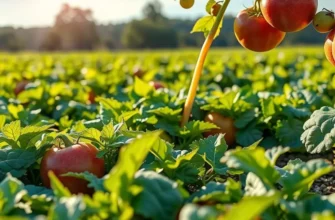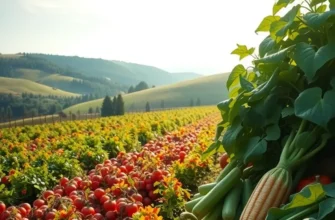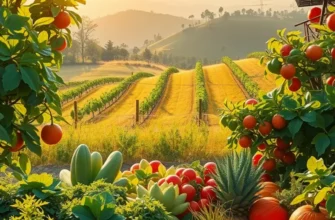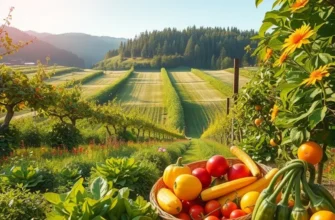Minimizing food waste is not just an eco-friendly choice; it’s also a practical strategy for managing meals at home. By adopting sustainable leftover solutions, you can enhance your food management skills, ensure safety while storing food, and contribute positively to the environment. This guide provides actionable insights on safe food storage and innovative ways to repurpose leftovers, helping you make the best use of your food resources.
Mastering Leftover Storage Techniques

Proper storage of leftovers is pivotal for reducing food waste, maintaining quality, and ensuring safety. Using the right containers can extend the life of your meals. Opt for air-tight containers made of glass or BPA-free plastic. These materials prevent odors from seeping in and resist staining. Avoid oversized containers; choosing ones that closely fit the volume of leftovers reduces exposure to air, which can degrade food quality.
Before storing, allow hot food to cool slightly. Rapid cooling prevents bacterial growth, preserving safety. Ideally, food should reach room temperature within two hours of cooking. Dividing large amounts into smaller portions speeds this process. Avoid over-stacking before the food cools to prevent heat retention.
Labeling is crucial to keep track of stored food. Use labels or masking tape to mark containers with the contents and date stored. This simple step aids in identifying potentially expired foods promptly. The “first in, first out” method encourages consuming older items first, reducing wastage. Keep a dedicated area in the fridge for leftovers to help organize and prioritize meals needing attention.
The refrigerator’s placement affects stored food. Keep leftovers on upper shelves where cooling is more consistent. Avoid the door for perishable items due to temperature fluctuations from frequent opening. For those interested in more ways to reduce waste, explore low-waste cooking and preparation techniques to complement storage solutions.
Freezer storage offers extended freshness, provided food is correctly packaged. Use freezer-specific containers or wrap items in foil before placing them in bags to avoid freezer burn. Also, remember to label these containers with expiration dates, typically three months from freezing.
Mastering leftover storage not only diminishes food waste but also ensures meals are a joy to revisit. By investing in appropriate containers, cooling methods, and effective labeling, you can significantly impact food preservation, save money, and contribute positively to environmental efforts.
Creative Ways to Repurpose Leftovers

Transforming leftovers into new creations not only reduces waste but also sparks culinary creativity. Discovering ingenious ways to repurpose grains, vegetables, meats, and sauces can turn ordinary scraps into extraordinary dishes. Here are a few ideas to help make the most of your leftovers.
Start with leftover grains like rice, quinoa, or couscous. Instead of reheating them as is, consider turning them into flavorful stir-fries or hearty grain bowls. Combine with whatever vegetables you have on hand and a protein source for a balanced meal. Additionally, you could craft a delicious fried rice by briefly sautéing the grain with soy sauce, garlic, and eggs. For a Mediterranean twist, mix quinoa with cucumbers, tomatoes, and feta cheese, then drizzle with olive oil and lemon juice.
Vegetable remnants, like those last few stalks of broccoli or handfuls of spinach, can be incorporated into omelets, quiches, or frittatas. These make for a nutritious breakfast or light dinner option. Alternatively, roast them until they’re crispy for a satisfying side dish or salad topping. Blending vegetables into soups is another effective approach. Consider using leftover potatoes and carrots to concoct a creamy, blended soup that’s both comforting and nutritious.
For meats such as chicken, beef, or pork, the options are endless. Shredded leftover chicken can top a salad, fill a taco, or be added to a sandwich. Beef can be sliced thin and transformed into a quick stir-fry with soy sauce and ginger for an Asian-inspired dish. Pork can be repurposed into pulled pork wraps with a tangy barbecue sauce.
Sauces often linger in the fridge long after the main dish is gone. Turn that leftover tomato sauce into a Shakshuka by poaching eggs directly in the sauce and adding spices like cumin and paprika. If you have leftover pesto, consider using it as a vibrant pizza base or toss it with pasta for a quick meal. For those wondering how to make better use of sauces, you may find practical tips on safer storage of sauces helpful.
Incorporating leftover food into new recipes calls for a balance between using what you have and getting creative. These transformations not only ensure nothing goes to waste but also provide an opportunity to explore new flavors and combinations. By reimagining leftovers, each meal becomes not just a way to clear the fridge but a chance to experiment and savor novel, delicious creations.
Final words
By implementing smart storage techniques and embracing creativity in repurposing leftovers, anyone can minimize food waste and enhance their meals at home. Picking the right containers, cooling food correctly, and labeling with dates are simple yet effective ways to prolong the life of your food. Furthermore, transforming leftovers into new culinary creations not only saves money but also reduces strain on resources. Cultivating these habits will allow you to enjoy a more sustainable kitchen and contribute positively to environmental preservation.







